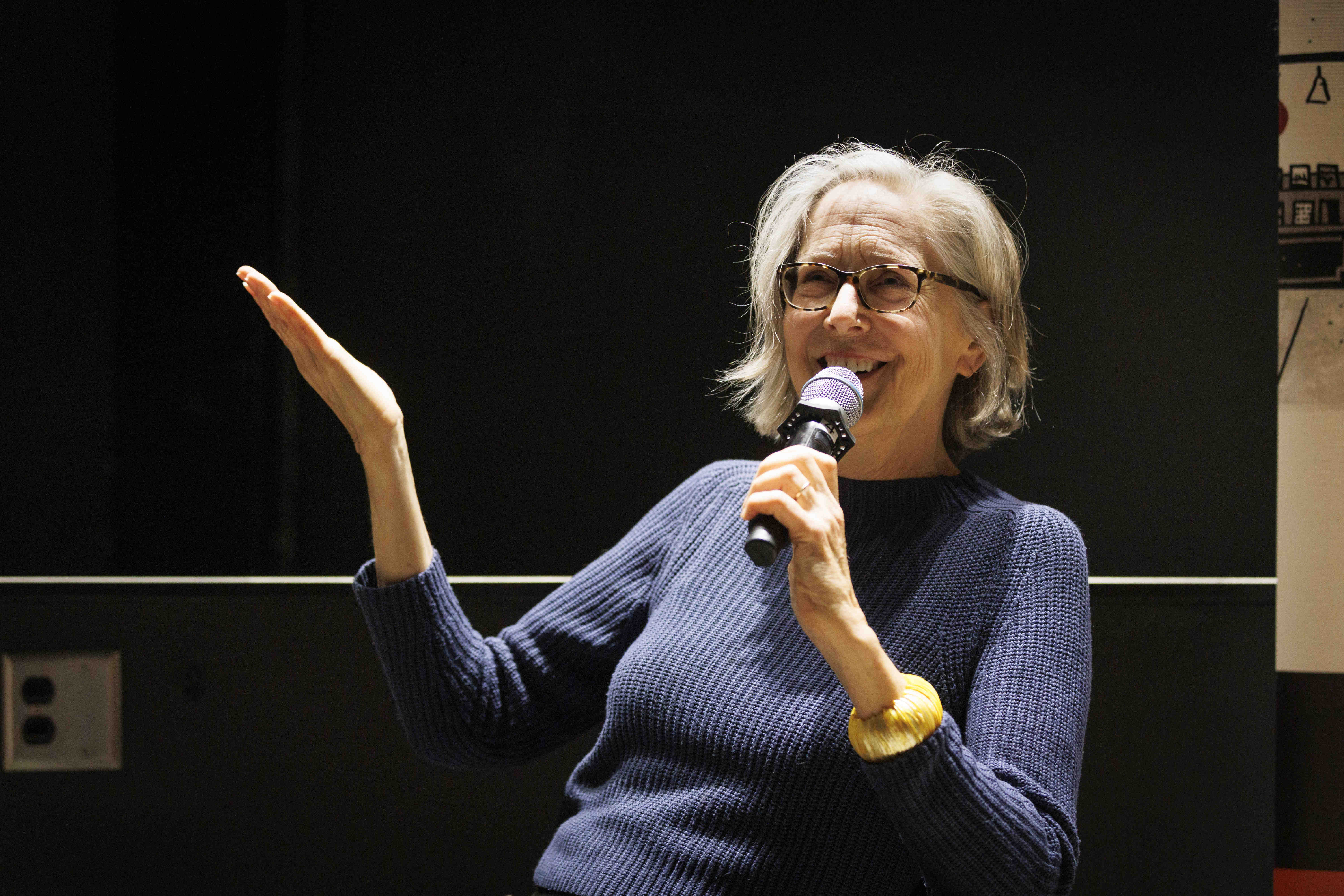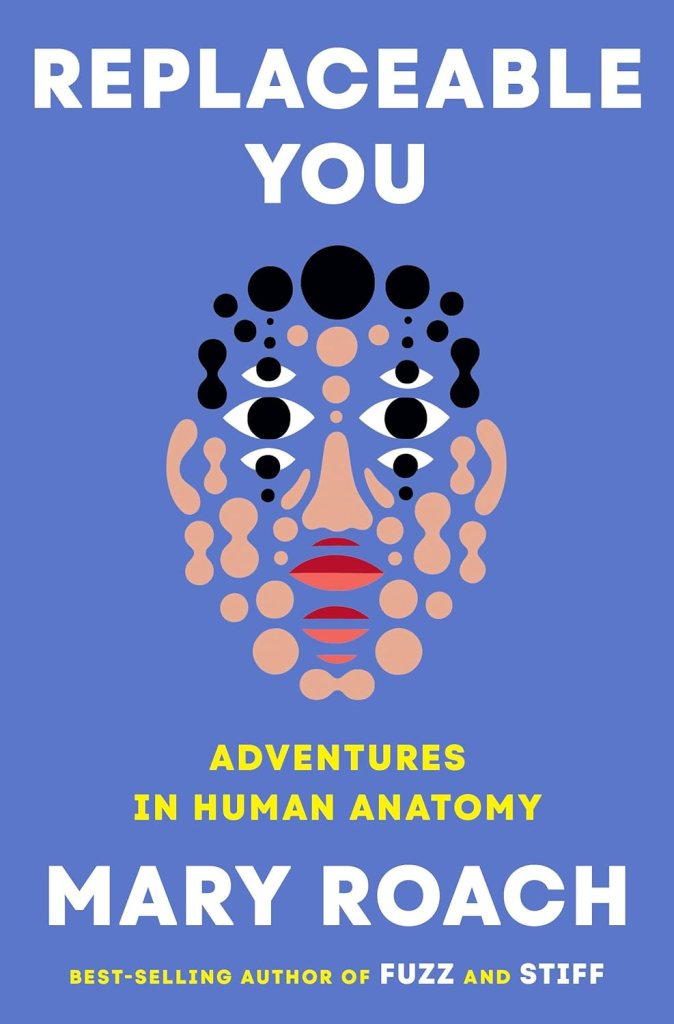Her science writing is not for the squeamish
Her science writing is not for the squeamish
It takes a lot to gross out ‘Replaceable You’ author Mary Roach

It is hard to gross out Mary Roach, but not impossible.
The science writer’s books have explored uncomfortable topics ranging from the afterlife of cadavers to the physiology of sex to the “alimentary canal” running from your mouth to your anus. She once visited a “body farm” in Tennessee where corpses are left to decompose to provide a time standard to determine time of death in murder and other cases.

“That was tough because it was visual and also olfactory, and at one point the researcher said, ‘If you put your ear really close, you can hear the maggots feeding,’” said Roach in a recent talk at Harvard’s Science Center. That maggot fest didn’t do it, though, in part because Roach said her fascination with her topics often outweighs her disgust or horror.
But then her home county medical examiner stepped to the plate. That official, Roach said, “made it a personal goal to gross me out.”
“And she did, one day, succeed. She just said, ‘Oh, you should come in this morning, there’s an interesting case.’ And I don’t need to describe that.”
It was a rare instance of Roach leaving things to the audience’s imagination, something her books — including her latest, “Replaceable You: Adventures in Human Anatomy,” published in September — don’t tend to do. Roach spoke to a packed lecture hall, responding to questions from fellow science writer Elizabeth Preston and members of the audience. Roach proved as engaging and taboo-breaking in person as she is on the page.
In the talk, sponsored by the Harvard Book Store, the Faculty of Arts and Sciences’ Division of Science, and Harvard Library, Roach said she starts with a broad topic of interest to her and then goes by instinct. When she hears of an interesting and illuminating fact, a finding, or some other wrinkle, she emails the researchers — she spends a lot of time emailing strangers, she said — and visits the site to see for herself. Sometimes those trips are a bust — not as interesting as she expected, or without the access she envisioned. She told of volunteering for an experiment that she thought would lead to a compelling article about how airplane seat ergonomics are tested. When she arrived, she was told she had to sit in the seat for eight hours.
“I sold it to this magazine and then I got there and it’s like, ‘You’re going to be sitting in this chair for eight hours.’ And that’s what it was,” Roach said. “I don’t think it was my most interesting piece.”
Usually, however, Roach said she can take away something from a trip and often gets more than she anticipated: “You don’t know until you get there.”
Her humorous approach to sometimes serious subjects involves walking a fine line, however, and she admitted she sometimes wobbles. That’s where her editors come in, highlighting when her intended light touch becomes disrespectful, or when her treatment of a subject is simply too much.
Her most recent book, “Replaceable You,” explores human efforts to repair and replace parts of the body. The book takes the reader through the early fumbling to sophisticated modern efforts at prosthetic limbs, joints, eyeballs, reproductive organs, and skin grafts. She describes an early effort at a skin graft where the skin remained attached to the donor animal — a dog in this case — in order to ensure blood flow and the graft’s survival on its human host. The account of the experiment, done by a French doctor in the 1800s, was in French, and when Roach saw that it involved a living dog, she assumed it was something small and portable.
Her most recent book, “Replaceable You,” explores human efforts to repair and replace parts of the body.
“It said ‘un chien danois’ and I thought, ‘Oh, Danish dog breeds.’ I’m not that familiar with Danish dog breeds but I’m picturing quite a small one because it’s going to be attached,” Roach said. “But, in fact, no. It was a Great Dane — and he complained about ‘mouvement continuelle excessif’ (excessive continual movement). And how do I — just because of the image — how do I not?”
Over the course of working on the project, Roach said she became convinced that the body is a marvel of evolutionary engineering, with each organ and part adapted nearly perfectly to its purpose. Human efforts to replicate them almost always fall short, she said.
“I did realize early on that the human body is such a miraculous machine and to think that you could create any component of it as good as what we’re born with, even something that is malfunctioning, and you could come up with a replacement,” Roach said. “There was a point where I thought I need to change the title. … Technically it should be ‘Irreplaceable.’”
Latest Harvard
- Looks like a book. Reads, to some, like a threat.Houghton exhibit explores forbidden history
- Over 60 and onlineIn new book, law professor busts myths about ‘hapless grandparents’ in the digital age
- ‘How old are you? 70s? You’re JV, maybe next year.’Olympic gold winner Bill Becklean has been at crew for 75 years, will be coxing boat of octogenarians at Head of the Charles
- Harvard reports operating deficit amid federal funding cutsUniversity continues to advance teaching and research in face of significant financial challenges
- Was ‘Aeneid’ critiquing or glorifying empire?Authors of new translation dig into lasting impact of epic that Virgil wanted burned
- When your English teacher writes a book on Taylor SwiftProfessor Stephanie Burt examines star’s influence, work ethic, why her music matters






